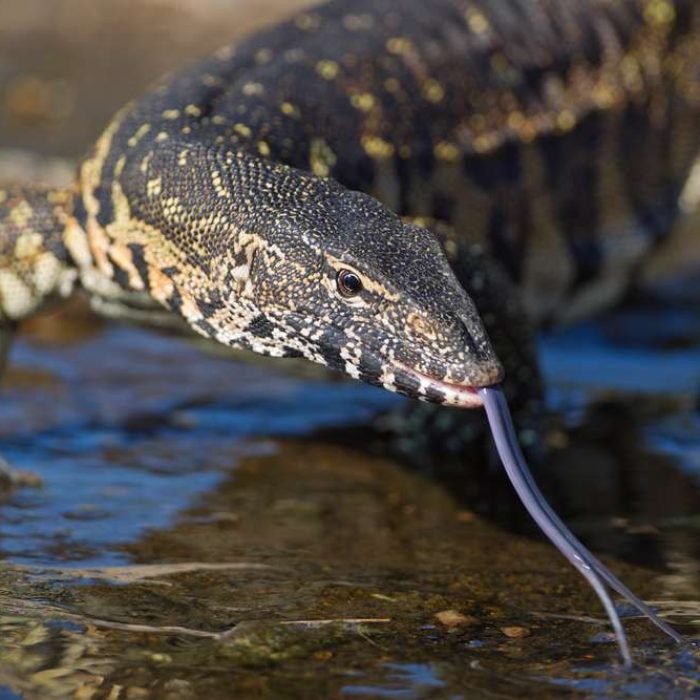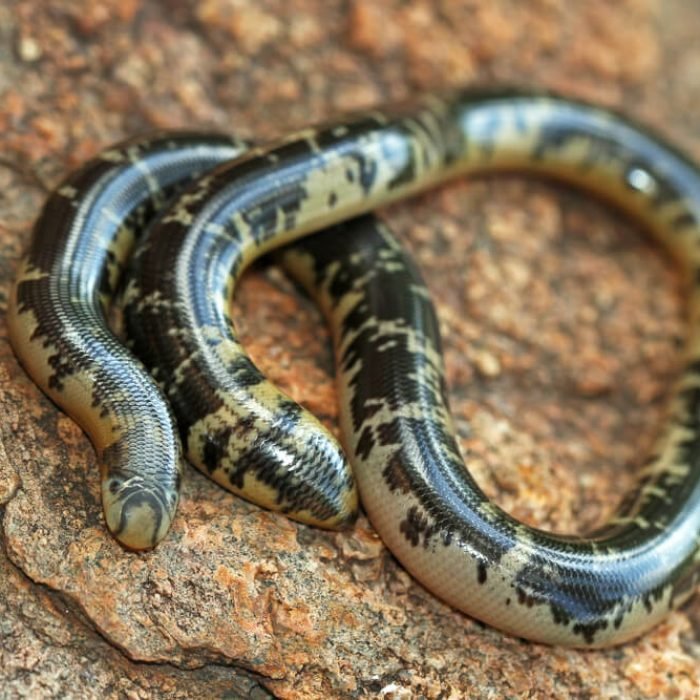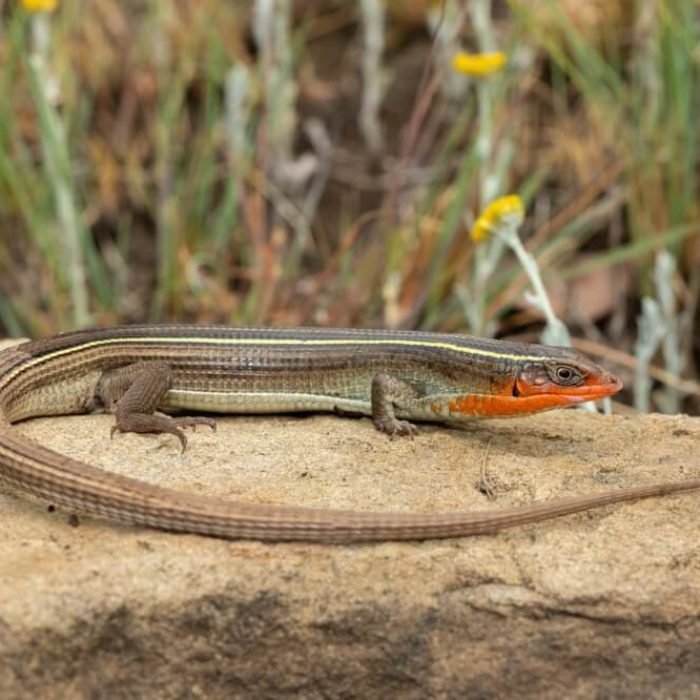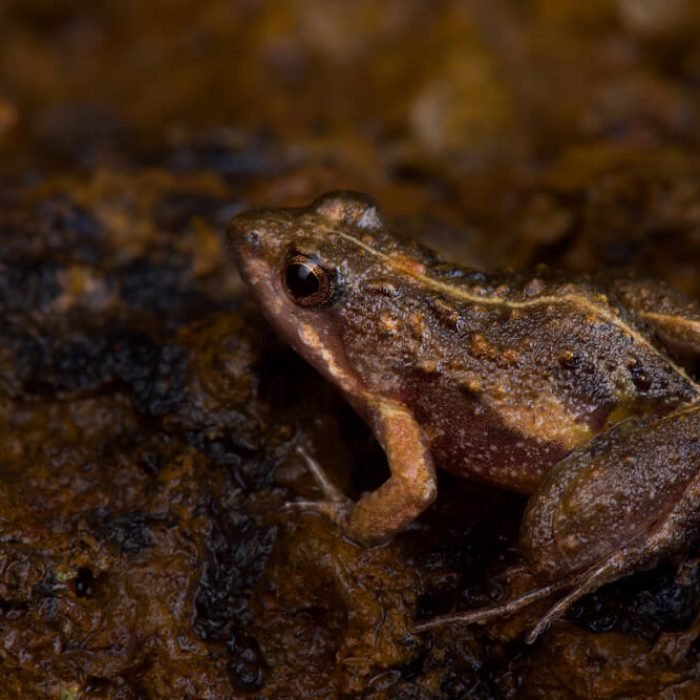Nile Monitor
( Hopani or water monitor )
- Varanus niloticus
- IUCN Status: Least Concern
- Threat: dangerous
- Venom/Toxin: none
- Trend: stable

General Information
The Nile monitor is one of three monitor lizards found in Zambia. On average, it weighs slightly less than the bulkier rock monitor. It is closely related to the mosasaur, a large, extinct sea monster that disappeared 65 million years ago.
Description
The Nile monitor has quite striking, but variable, skin patterns, as they are greyish-brown above with greenish-yellow barring on the tail and large, greenish-yellow rosette-like spots on their backs with a blackish tiny spot in the middle. Their throats and undersides are an ochre-yellow to a creamy-yellow, often with faint barring. They have muscular bodies, strong legs, powerful jaws and their nostrils are placed high on their snouts. Their teeth are sharp and pointed in juvenile animals and become blunt and peg-like in adults. They also possess sharp claws. Like all monitors, they have forked tongues, with highly developed olfactory properties.
Fun Facts
The Nile monitor is Africa’s longest lizard. They can run faster than humans over a short distance. They have a long tail that multitasks as a counterweight when running, an oar to help power it through the water and a whip with which to lash out at an assailant in self-defense. They are the largest of the three monitor lizards found in Zambia.
Nile monitors are intelligent reptiles and have been observed using tools to catch prey.
Ecology & Behaviour
The Nile monitor are very well adapted for an aquatic lifestyle. They are also excellent climbers and quick runners on land and they have sharp claws used for climbing, digging, defense, or tearing at their prey. Their main predators include, Crocodiles, pythons, leopards, eagles, and humans. Predatory fish, herons, snakes and even adults of their own species prey on young.
Nile monitors are opportunistic predators and will eat anything they can catch, including fish, birds, mammals, reptiles, and amphibians.
Diet
Nile monitors are carnivores and they can often be seen near crocodile nesting sites as they love to steal and eat their eggs. They also eat, Fish, insects, aquatic creatures, and some mammals.
Reproduction
In March – May, a female Nile monitor breaks into a live termite mound to lay up to 60 eggs (the largest clutch size of any lizard) The termites repair the damage, leaving the eggs to incubate in warm, humid conditions. They hatch with the following spring rains, when the softened soil allows the hatchlings to break out. When they hatch, baby lizards resemble tiny versions of their parents.
Conservation
It is categorized by the International Union for Conservation of Nature (IUCN) as a, ” Least Concern “.
Distribtion & Habitat
The Nile monitor can be found almost throughout Africa except the northwestern part of the continent. They can be found near Rivers and other water bodies, and they make their homes in holes and are usually not far from crocodile populations as they love to steal and raid their eggs.
Interaction With Humans
The eating of Water Lizard or Water Monitor (Hopan in Silozi is common among some Lozi people of Western province of Zambia. While the eating of water lizard is common in other ethnic groups as well such as the Sengas, Tumbukas and Ngonis, it is more pronounced among the lozi people, especially those found in the rural parts of the country. Nile monitors are often found in the pet trade despite their highly aggressive demeanor and resistance to taming.











